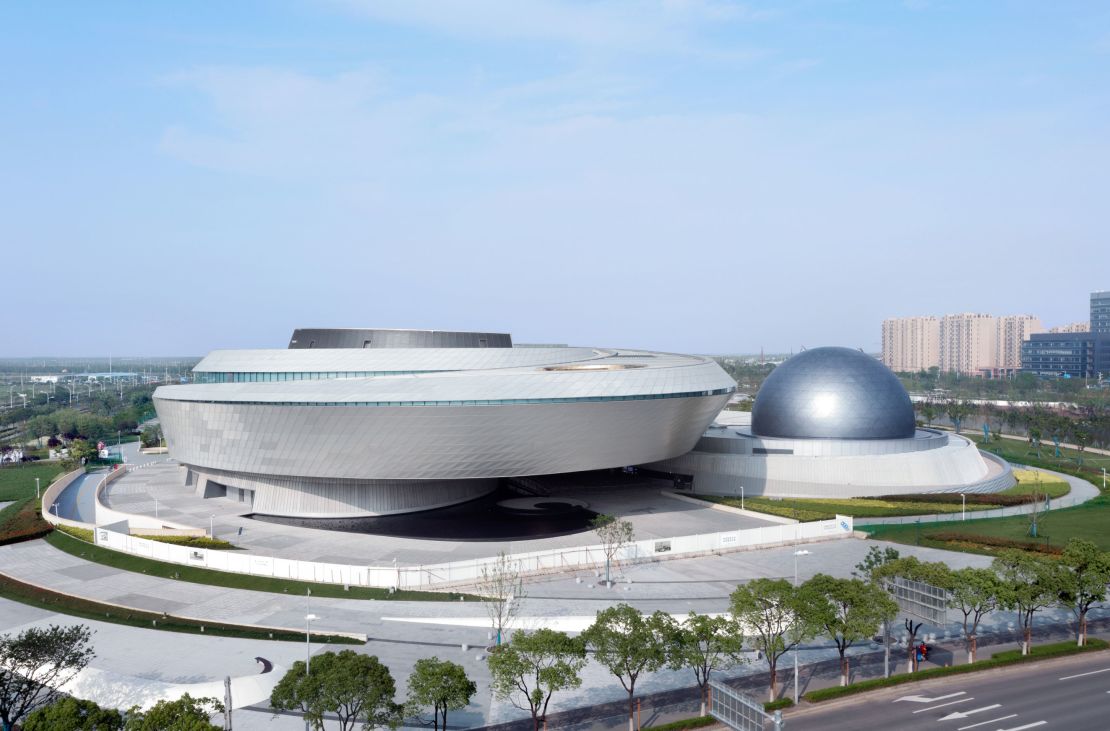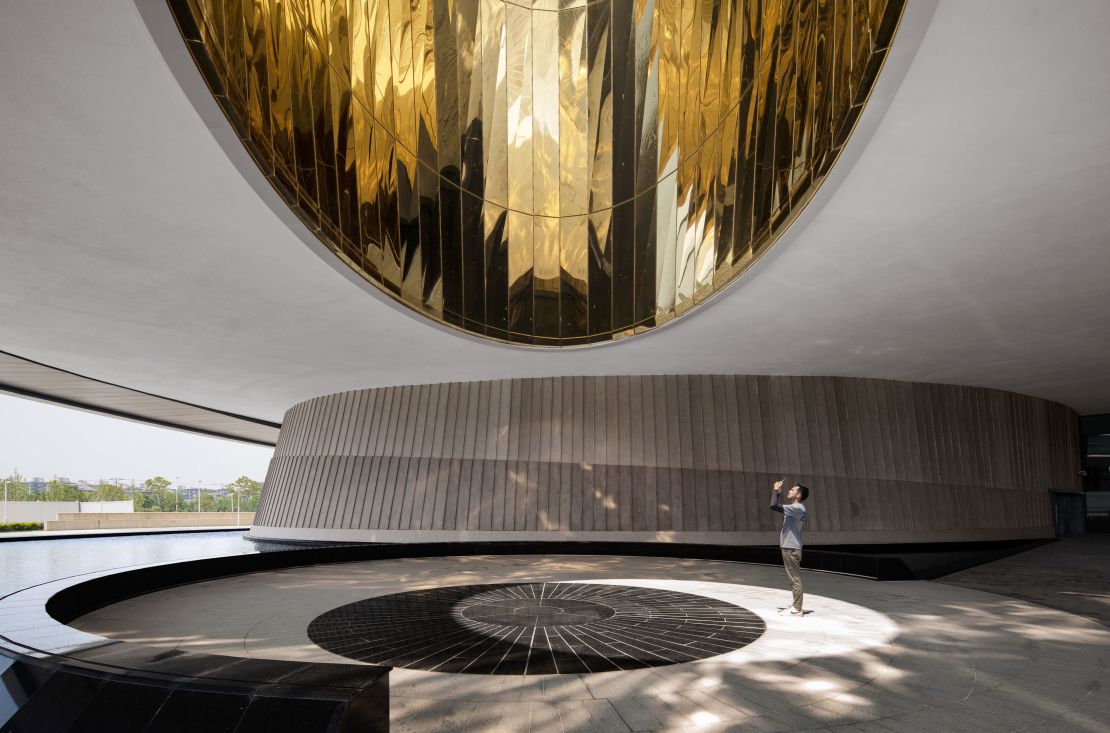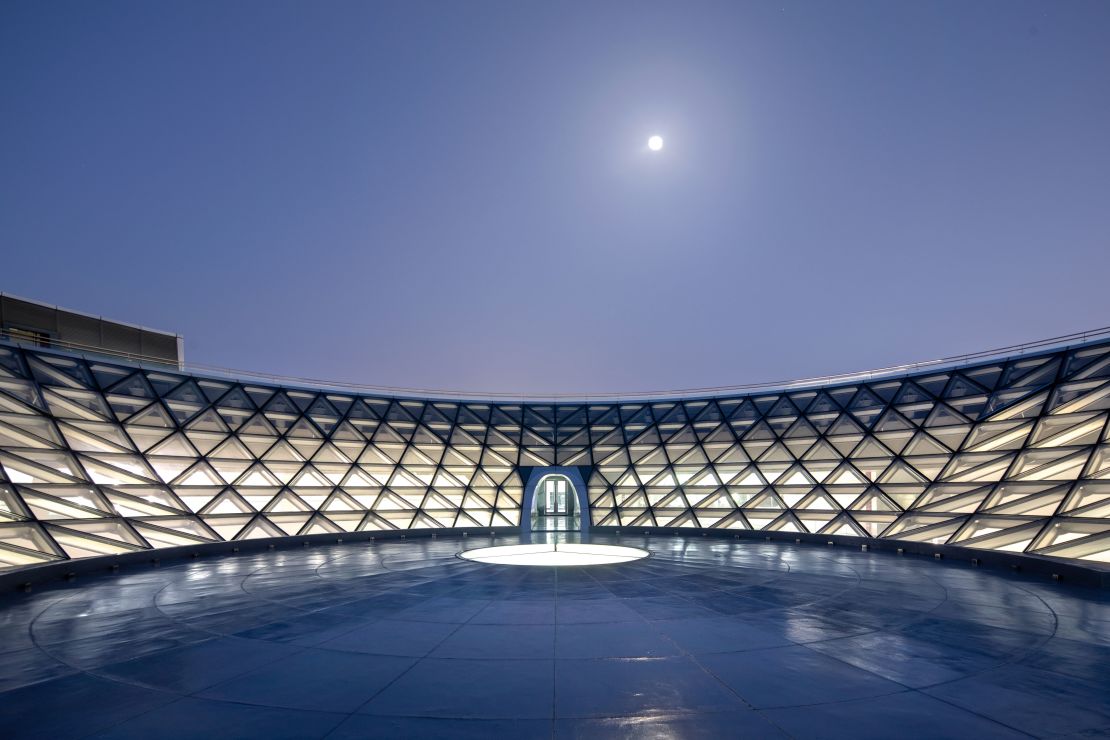The world’s largest astronomy museum is opening in Shanghai, and its complex curvilinear shape has been designed to reflect the geometry of the cosmos. With no straight lines or right angles used throughout, the structure is instead formed from three overlapping arcs that allude to the orbits of celestial bodies.
Opening Friday, the 420,000-square-foot Shanghai Astronomy Museum – a branch of the Shanghai Science and Technology Museum – will house exhibitions, a planetarium, an observatory and a 78-foot-tall solar telescope. It was conceived by US firm Ennead Architects, which in 2014 won an international competition to design the building.

“We really thought that we could leverage the architecture to bring incredible impact to this whole experience,” said lead designer and partner Thomas J. Wong in a video interview. “The building is meant to be this embodiment of … astronomically inspired architecture.”
By foregoing straight walls in favor of arcing lines, Wong and his team hoped to show that everything in the universe is in constant motion and governed by an array of forces.
According to Wong, they were also influenced by the “three-body problem,” the as-yet-unsolved question of how to mathematically calculate the motion of three celestial entities – like planets, moons or stars – based on their gravitational relationships to one another. While this calculation can be carried out with two celestial bodies, the pathways become chaotic and unpredictable with three.

“The reason why we thought the three-body problem was interesting is because it’s a complex set of orbits,” Wong explained. “(These are) relationships that are dynamic, as opposed to a simple circle around the center. And that was part of the (design’s) intent – to capture that complexity.”
In Wong’s design, the cosmic riddle translates into three arcing shapes: an oculus, sphere and inverted dome, referencing the sun, moon and stars, respectively. Each houses an important visitor attraction or design function.
Visitors first encounter the oculus, which opens up above the museum’s main entrance. It acts as a timepiece, producing a circle of sunlight that travels across the floor throughout the day, indicating the time and season.

Next comes the planetarium theater, which is enclosed in a sphere and emerges from the building’s roof like a moonrise. The underbelly of the massive structure appears to float weightlessly, with room to walk beneath.
Lastly, a vast inverted glass dome on the roof’s apex gives visitors the chance to view the open night sky, in what a press release described as “a real encounter with the universe to conclude the simulated experience within.”
“We want people to understand the special nature of the Earth as a place that hosts life, unlike any other place that we know of in the universe,” Wong said.

With offices in both the US and China, Ennead Architects is also responsible for New York’s famed Rose Center for Earth and Space at the American Museum of Natural History, a project co-designed by one of the firm’s founders, James Polshek. Wong said there is “a lineage” between the two buildings.
“Polshek referred to the Rose Center as a ‘cosmic cathedral,’” Wong said. “That’s very appropriate to the experience here at the Shanghai Astronomy Museum.”
